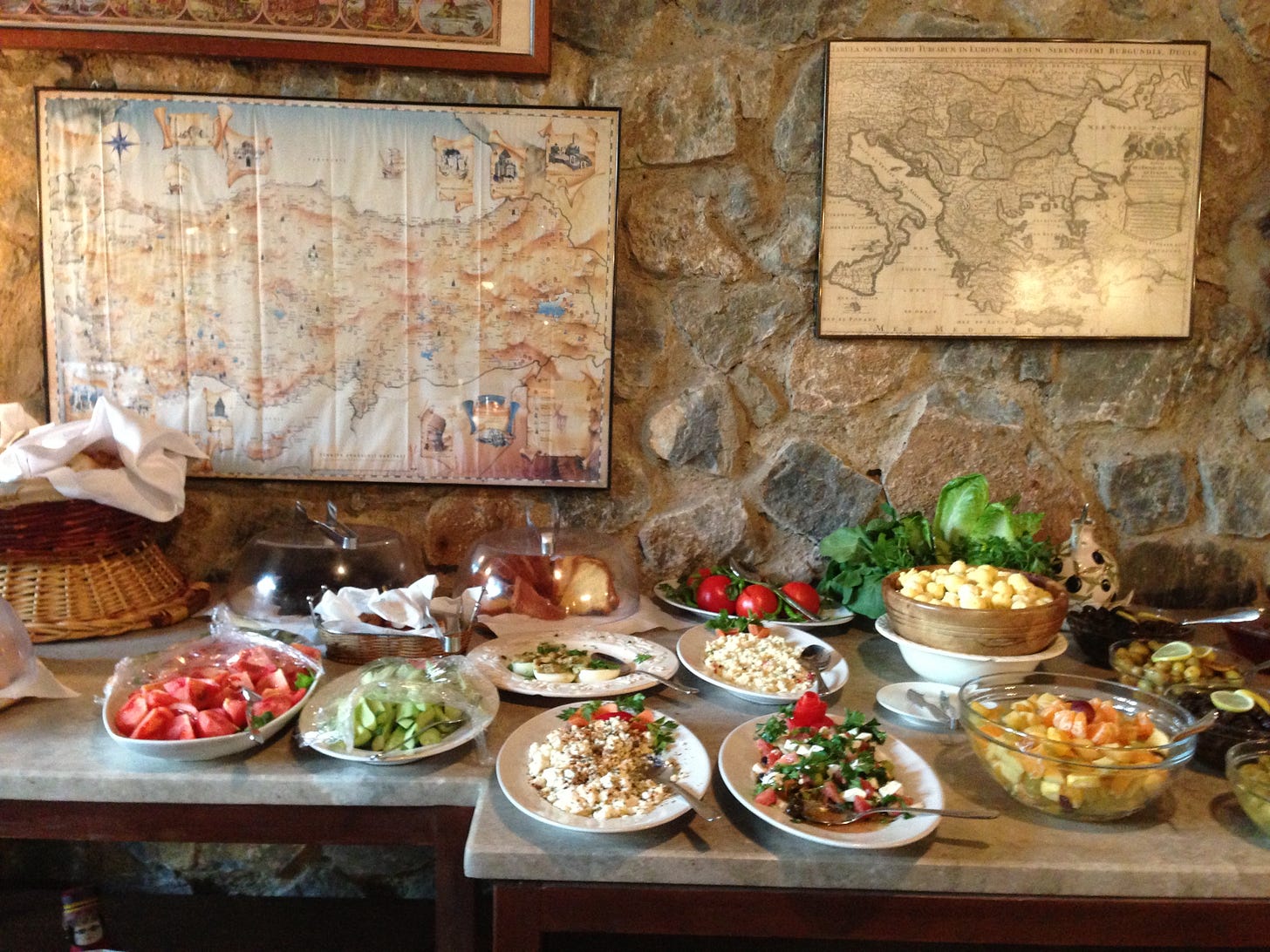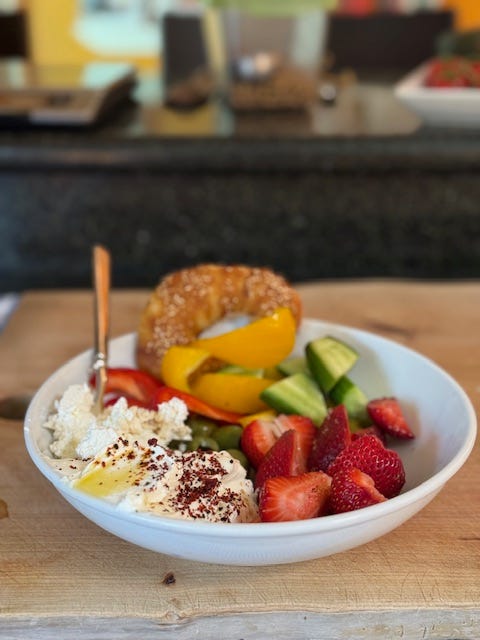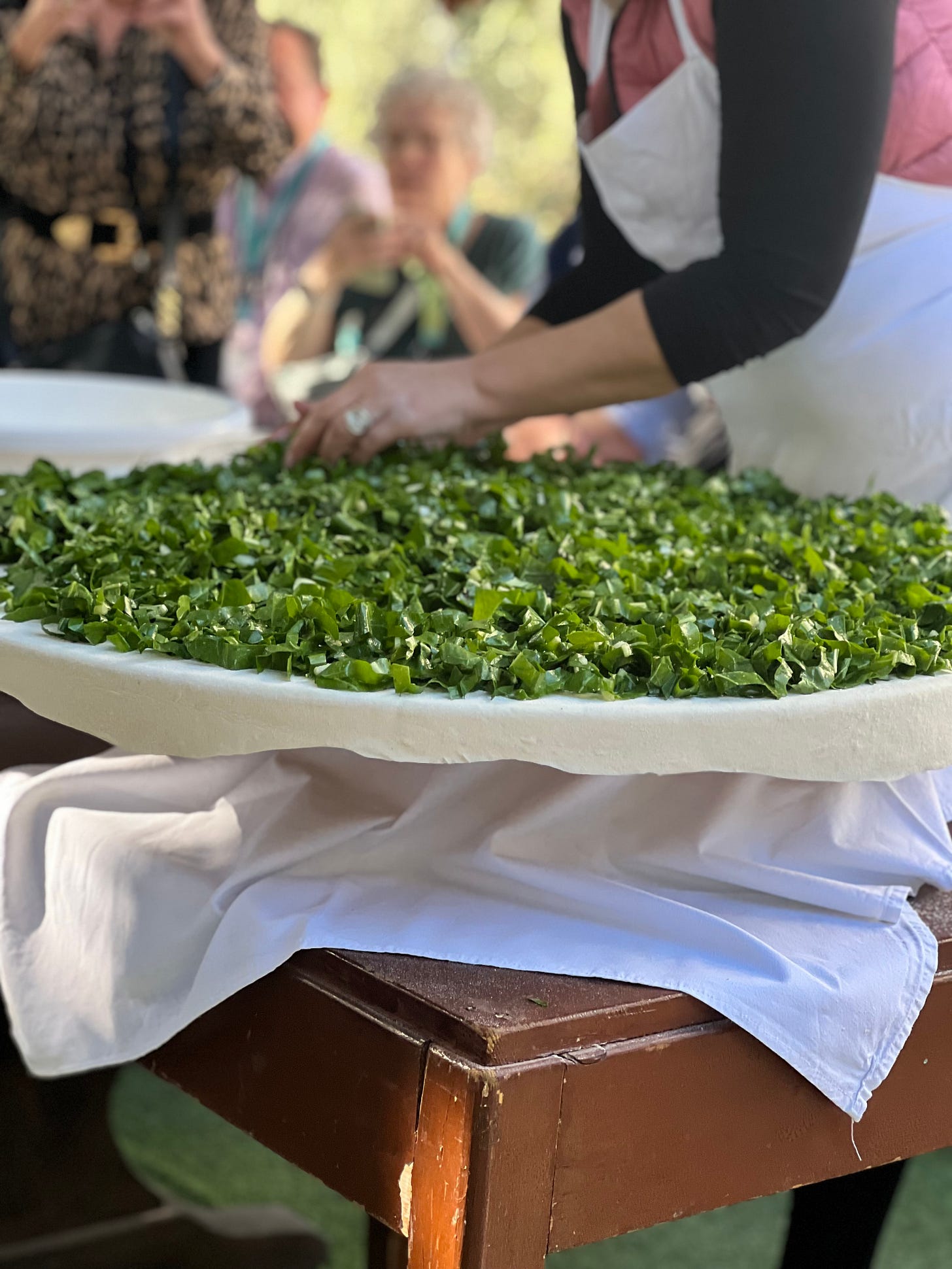Bringing a Slice of Your Travels Home with You
At Oldways, we believe that travel is not just about sightseeing. It’s about cultural immersion— experiencing and learning about local cuisines, cultures and traditions.
We celebrate food as one of the greatest gifts of heritage, carrying with it the wisdom, customs and authentic flavors of our ancestors. Our hope is that our travelers take the recipes and knowledge they've gained back home to share with their friends and family -- bringing the best elements of traditional diets forward into today’s world.
The African word and symbol, Sankofa, translates as “to go back and take.” The symbol (below) of a bird, arching its neck to take an egg from its back, symbolizes taking from the past what is good and bringing it into the present in order to make positive progress through knowledge. Bringing the best of the past to the present is the goal of all Oldways programs: Heritage Diets, the Whole Grains Council, the Oldways Cheese Coalition and our culinary travel program, Oldways Culinarias.
Speaking practically, here are a few examples from recent Oldways Culinarias that showcase how easy it can be to embrace this concept, and why it is so delicious and life-enriching to bring a slice of your travels home with you.
The Turkish Breakfast
In May of 2025, we were in Türkiye – in both the Black Sea region and Istanbul. Similar to breakfast in many Eastern Mediterranean countries, the Turkish breakfast is not toast and cereal. A Turkish breakfast features vegetables, tomatoes, olives, nuts, cheese, olive oil and many other local specialties, such as simit. Simit refers to circular baked bread covered with sesame seeds. Called Golden Rings on Ana Sortun’s Sofra Bakery take-out menu, “Simit is our signature breakfast bread and a beloved street food in Türkiye. It resembles a bagel but is thinner with a wider center.”
We’re returning to Turkey — Cesme, Izmir and Ephesus — in 2026, but the attendees from this past May are already bringing a Turkish breakfast home! Here are a few ways they’ve made the Turkish breakfast their own:
Here is Laura Senier’s spin on the Turkish Breakfast: “Salad of arugula, cherry tomatoes, pickled red onion, and chopped hazelnuts, dressed with lemon juice and EVOO. Crispy fried eggs in spice-infused olive oil. Pita wedges toasted with either white Bulgarian cheese and mint or feta and mint.”
Lourdes Smith “slathered Turkish tomato paste on the whole wheat sourdough toast. [She] of course had to add some feta, then egg smoosh, olive oil, and drizzle Turkish pepper toppings that we learned about -- pul biber -- and the lovely dark pepper! Yum!!”
Cheryl Sternman Rule sent a photo with a note – “Glad I’m not the only one with TBS (Turkish Breakfast Syndrome). It’s clearly an epidemic.”
And from Sally Wyman, who created her own simit! “I do have a picture of one of the possible consequences of traveling with Ana, Banu and Sara: an overwhelming urge to try making simit -- used Soframiz recipe, and it was great, Ana!”
A Pie of Greens
A pie filled with greens is traditional all over Greece. Different versions are common in other parts of the Levant – the Eastern Mediterranean. In Croatia, along the Adriatic, we discovered another pie of greens – Soparnik. I wrote about this interesting (and giant) pie, cooked over a fire, in an earlier Substack. Our friend in Croatia, Nikolina, who introduced us to this tasty, savory pie noted:
“The Soparnik workshop is a celebration of community and tradition, so it makes you enjoy your creation paired with the finest local wines and accompanied by stories of our culinary heritage.” To bring this home, see a half-version of Nikolina’s recipe in my earlier Substack.
Oldways longtime friend Aglaia Kremezi also has many ways to create pies of greens, which she does for guests at her cooking school on the island of Kea in Greece. As David Tanis wrote in The New York Times, Aglaia Kremezi has no problem making phyllo dough at home in Greece whenever she makes anything pie-like. And she makes a lot of pies.” To bring Aglaia’s pies to your home, check out the recipes on the Kea Artisanal website or on the Oldways website.
Risotto Without Rice
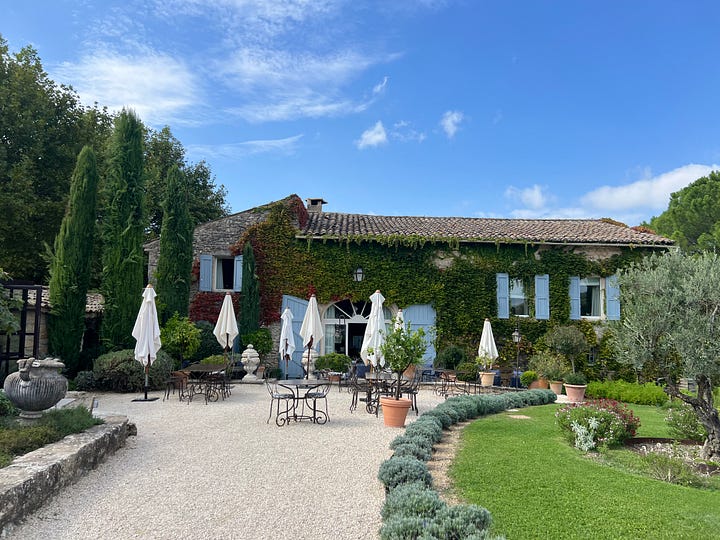
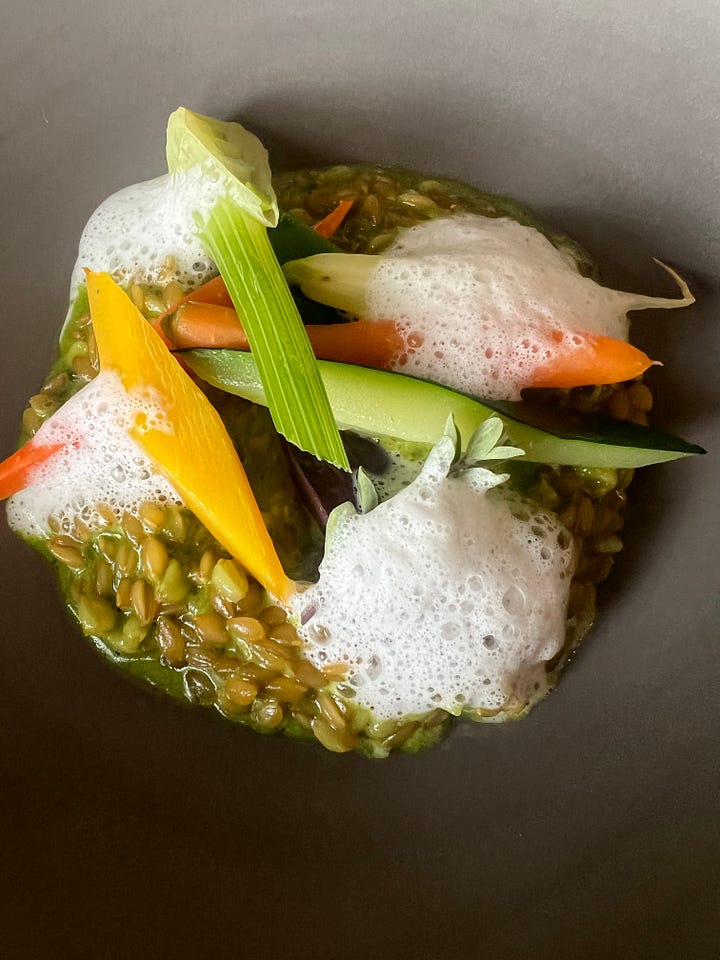
In April of this year, Oldways was in Provence. Based in Aix, we traveled around the region to learn about wine, cheese, olive oil, fish, soap, and perfume-making. Naturally, we stopped for one memorable meal after another. Perhaps the most exquisitely beautiful place we enjoyed a meal at was La Bastide de Marie in the Luberon. The entirely plant-based meal was equally lovely, including one dish that the entire group wanted to be able to bring home: spelt risotto with the chef’s vegetable medley – or Risotto de petit épeautre, mijoté de légumes du chef. Kindly, La Bastide de Marie sent us the recipe.
Pintxos or Tapas
Tapas hopping is a beloved activity in Madrid, Barcelona and many other cities and towns in Spain. And therefore, everyone will also love pintxos (PEEN-chos) hopping in San Sebastián, in the Basque region of Spain. Pintxos and tapas are both small plates or small bites of local specialties that go along with wine or beer or whatever your drink of choice is. The origin is that of a freebie. When patrons went to a bar for a drink, they’d receive a small bit of food placed on top of the glass. The top is the tapas.
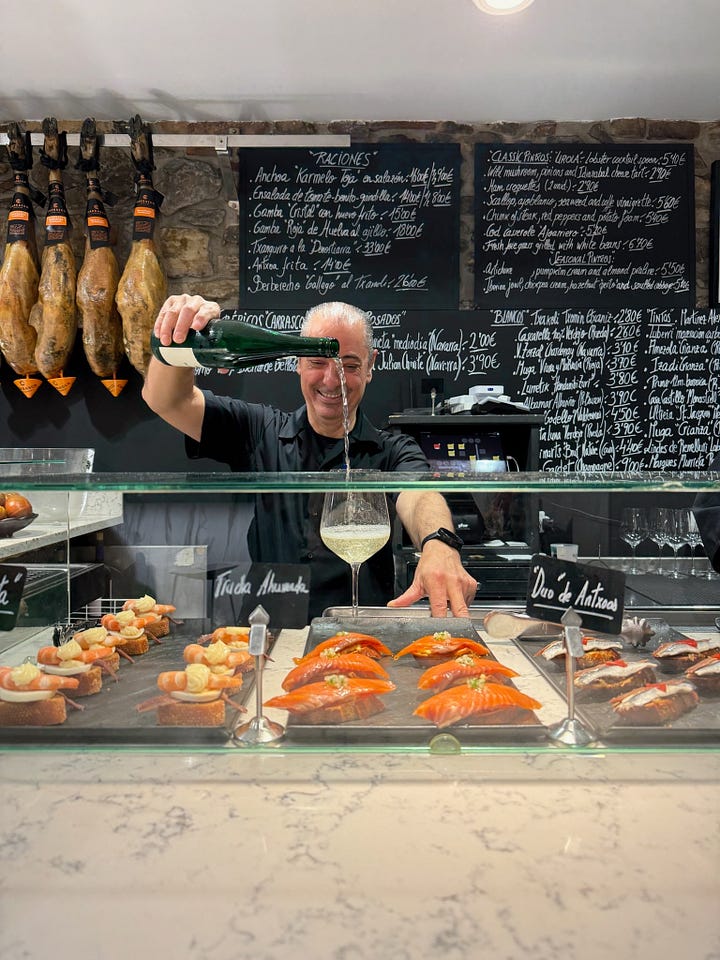
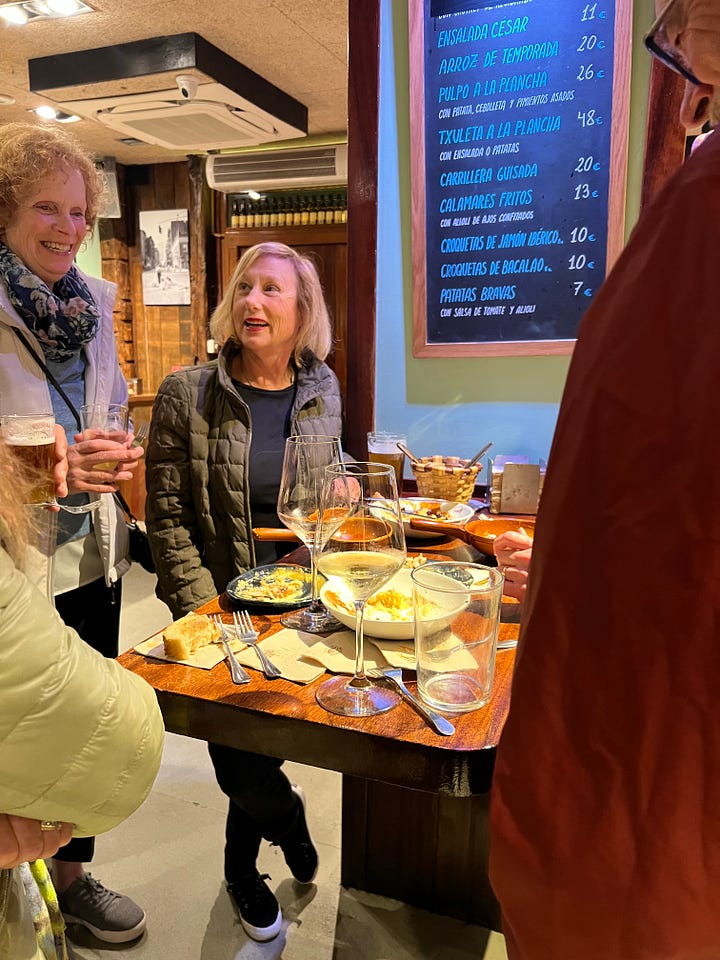
Meze or mezze in the Eastern Mediterranean, spelled slightly differently depending upon the country, are similar: small plates of food accompanying something to drink.
This is an easy practice to bring home – for parties, for dinner and even for lunch boxes, create small plates that celebrate Spanish or Basque or Turkish or Greek heritage. Anything goes.
Aceto Balsamico – The Real Stuff
Aceto Balsamico Tradizionale is unlike any other vinegar. It is the real thing, a real condiment, made the same way it has always been made. One drop of it on a bite-sized chunk of Parmigiano-Reggiano, for example, transforms it into a unique sensory experience, and it does the same for a ripe strawberry. Real aceto balsamico does not obliterate the taste of the cheese or the strawberry, but in the sense of a true condiment, elevates them, taking them to a new level. It is syrupy, dense, lush, velvety. Authentic aceto balsamico is permitted to be made only in the area around Modena and Reggio Emilia in north central Italy, and it is made as it has been for hundreds of years, aged in a series of barrels made from different woods.
This is an easy thing to bring home and can be bought in specialty stores in the U.S. Although the price is not small, the higher price is worth every penny for its amazing properties and taste, and for the fact that you use only a small amount at any one time. A drop on a piece of Parmigiano Reggiano can make you think you’re sitting in Parma or Modena or Bologna. A very happy thought.
Dolmades
When we spent a week in the Peloponnese last year (we’re returning to Greece on a Crete Culinaria next year!) one of our first days included a late lunch and lesson in making dolmades. Eirini Sofos, proprietor of Sofos Restaurant in Nemea along with her husband Giorgos, set out a long table with all the ingredients needed to make dolmades (grape leaves, rice, meat) and then taught us how to assemble and roll the dolmades. Ours may not have looked just like hers, but it was a good start for bringing the best of the old ways to today’s table.
No matter where you travel (join us on one of our newly announced 2026 Culinarias!), the enjoyment both of your trip and your return home can only be heightened by deliberately learning about the food heritage of the place you’re visiting. Reach back and take the egg to bring it forward.
Sara Baer-Sinnott
June 2025




